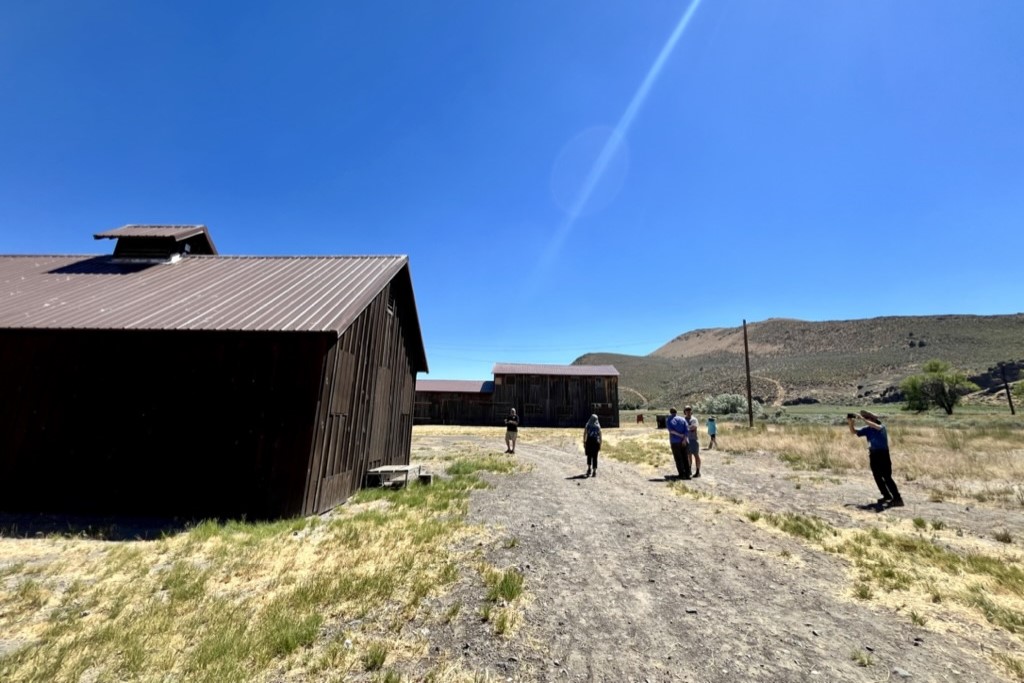August 21, 2024
Densho staff were honored to attend last month’s Tule Lake Pilgrimage, joining nearly 400 fellow pilgrims in returning to this important WWII incarceration site to remember its history and reflect on Tule Lake’s legacy as we look to the future. Densho Fund Development Manager Kassandra Hishida (she/they) shares some reflections from their first pilgrimage and how it inspired them to dig deeper into their family’s connections to Tule Lake.
Last month, I joined several Densho staff in attending the first Tule Lake pilgrimage since 2018 — and my first ever camp pilgrimage. We were among over 380 participants who came together to learn, remember, and grieve as we reflect on the lasting impacts of the unjust incarceration of Japanese Americans during World War II.
On the day of our departure, I set my alarm for 4am to make the drive from Fresno up to the Sacramento Betsuin just in time to catch our bus leaving for Klamath Falls promptly at 8am. As we departed for our five-hour drive, our bus monitors enthusiastically informed us that the pilgrimage begins on the bus! They brought out a portable microphone and each person on the bus took their turn to introduce themselves while sharing any questions and intentions that inspired us to attend this year’s pilgrimage. Many had traveled far to be here with us, and for many of us it was our very first pilgrimage. Some were survivors who were incarcerated at Tule Lake in their youth, some had direct family ties to those incarcerated at Tule Lake, and others were not directly connected to Tule Lake but still eager to learn more about the experiences of the families who were there.
When it was my turn to share, I introduced myself as a Yonsei rooted in California’s Central Valley and that I am mixed-race with a family of European, Mexican and Japanese lineages. I reflected that I was here to better understand the parallel yet distinct ways the different sides of my family have been impacted by interconnected systems of oppression perpetuated by the United States. I shared my commitment to acting in solidarity with communities around the world who have been similarly harmed by the United States, as well as my hope that learning more about my own roots would guide and ground my solidarity. These guiding intentions shaped my experiences at Tule Lake, and I appreciated that we each had a chance to share what inspired us to make this trip to the California-Oregon border in the peak heat of summer.
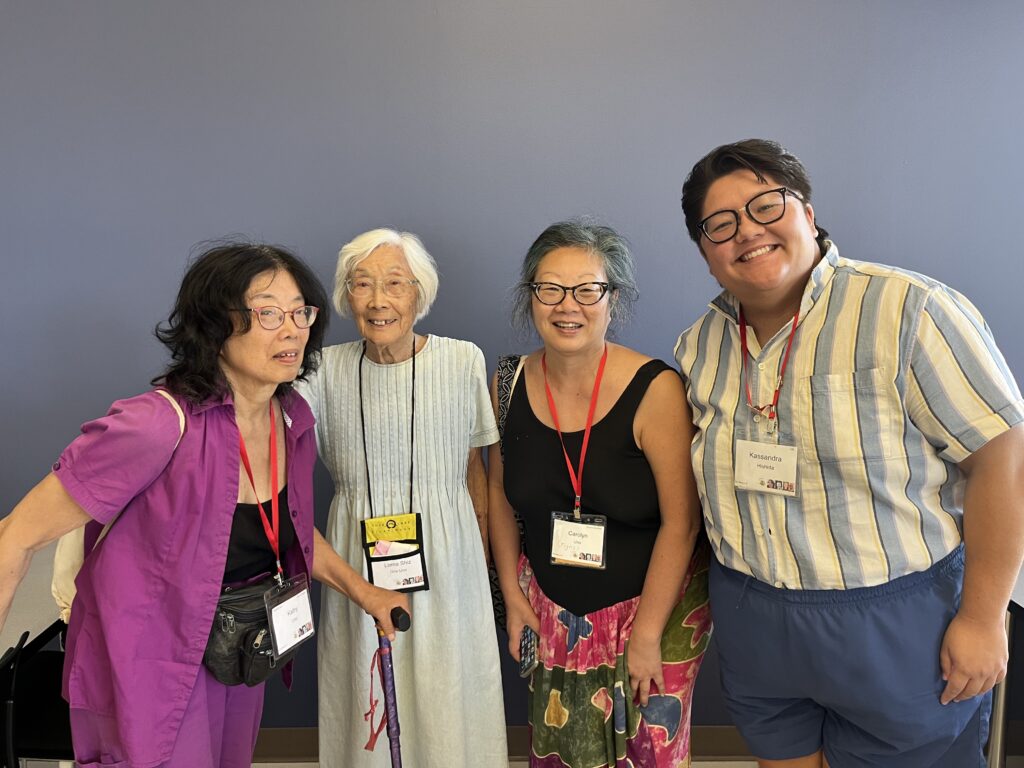
After several hours on the road, we finally arrived at the Oregon Institute of Technology in Klamath Falls, just north of the California and Oregon border. There, we were joined by hundreds of fellow participants who traveled from across the country to participate in the pilgrimage, many volunteering their time as speakers, docents, performers, bus leaders, and more. We celebrated our arrival with a welcome session that included opening remarks, an energizing performance from Tule Lake Taiko, and a round of recognition for the survivors and committee members in attendance as well as several honored guests.
During our second day together, we gathered under a large tent shading us from the over 110°F temperatures to honor the 333 incarcerees who died at Tule Lake by holding a memorial service in front of the Tule Lake Segregation Center Jail. The service opened with a moving procession led by the Sansei Granddaughters and descendants of those who died while incarcerated there, each of them holding part of a Shimenawa rope filled with 333 tags representing the names of those who did not survive Tule Lake. We burned incense in memory of the deceased to express our gratitude and to honor their lives. We then went on guided tours led by volunteer docents who had been training for over four years to provide us with a nuanced understanding of the diverse experiences of those incarcerated here. The searing heat that day served as a grounding reminder of the daily discomforts and challenges of life at Tule Lake.

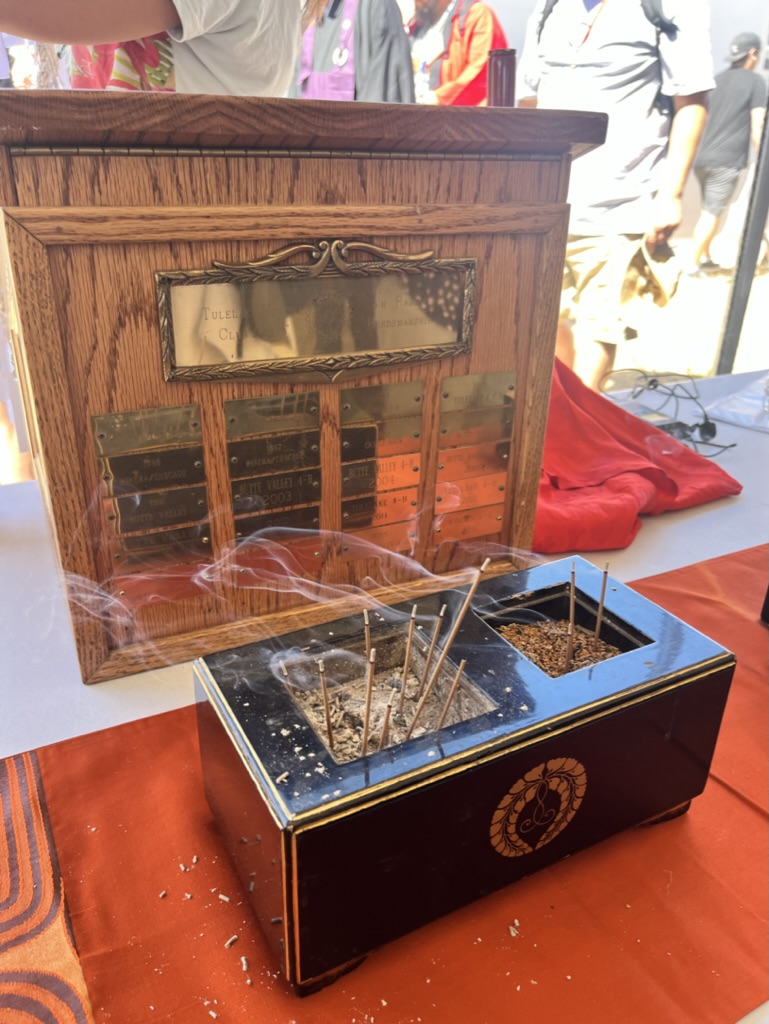
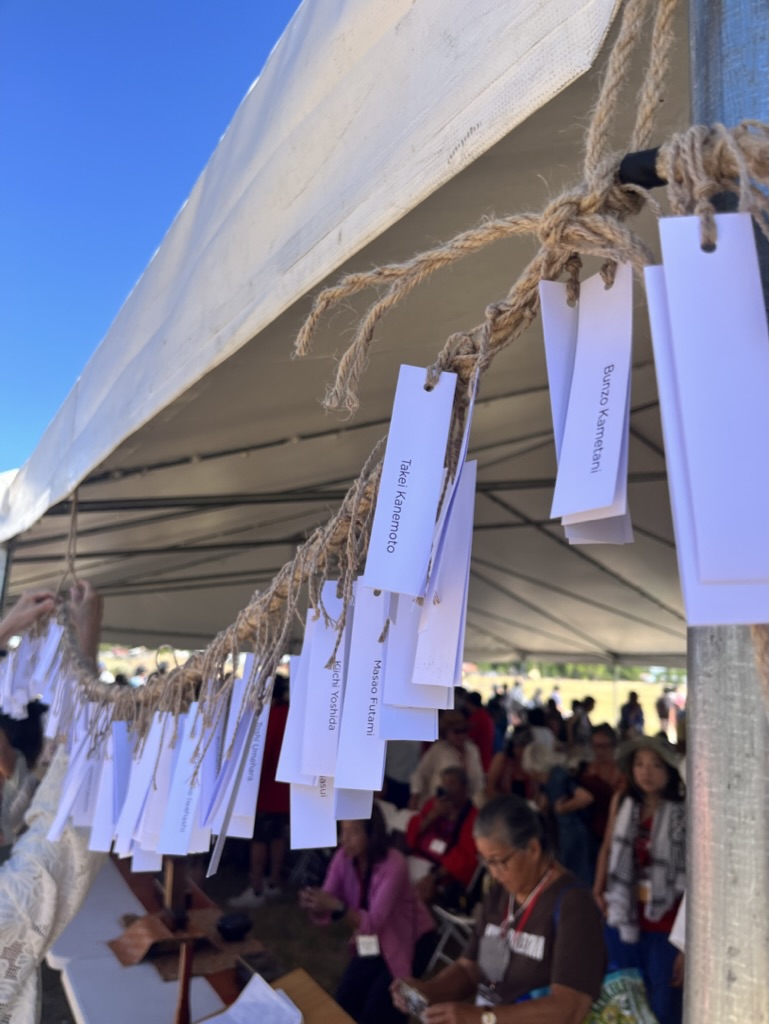
In addition to our time spent at the physical site of the Tule Lake Segregation Center, I equally appreciated the conversations and connections that happened throughout the rest of the pilgrimage. I attended an intergenerational workshop led by Japanese American leaders inviting others to join their organizing efforts in solidarity with Black reparations movements. I also joined a breakout session where youth ranging from 12-30 years old talked openly about intergenerational trauma. I even bonded over the shared experiences of being mixed-race with young people who are also Mexican American and Asian American — we have a group chat now! In between these conversations, I also listened in to discussions with survivors, descendants, scholars, translators, and storytellers who each offered unique insights into the wide range of experiences of those incarcerated at Tule Lake.
On our last full day together, I had the opportunity to participate in a healing circle alongside several other attendees who I had never met before. Over the course of just a couple of hours, we each had the opportunity to share openly about our experiences at the pilgrimage and as Japanese Americans. Many themes that reflected my own upbringing came up, including reflections on how we’re often racialized in predominantly white spaces and struggles to communicate between different generations. I left with the sense that many participants felt seen, heard and held by one another during this brief but meaningful exchange. As we closed our circle, my group reflected on how many of our own families rarely spoke so openly and candidly about our feelings to one another as we did that day. We encouraged each other to bring this sense of openness and reflexiveness into our daily lives as part of a continuous journey of healing.
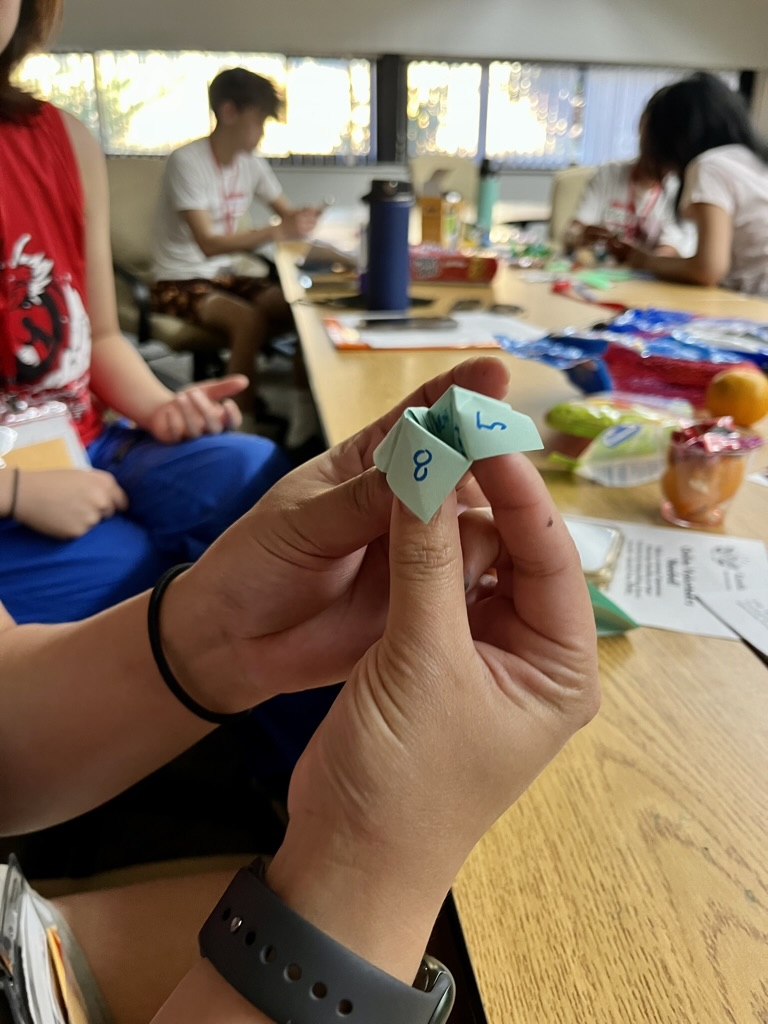
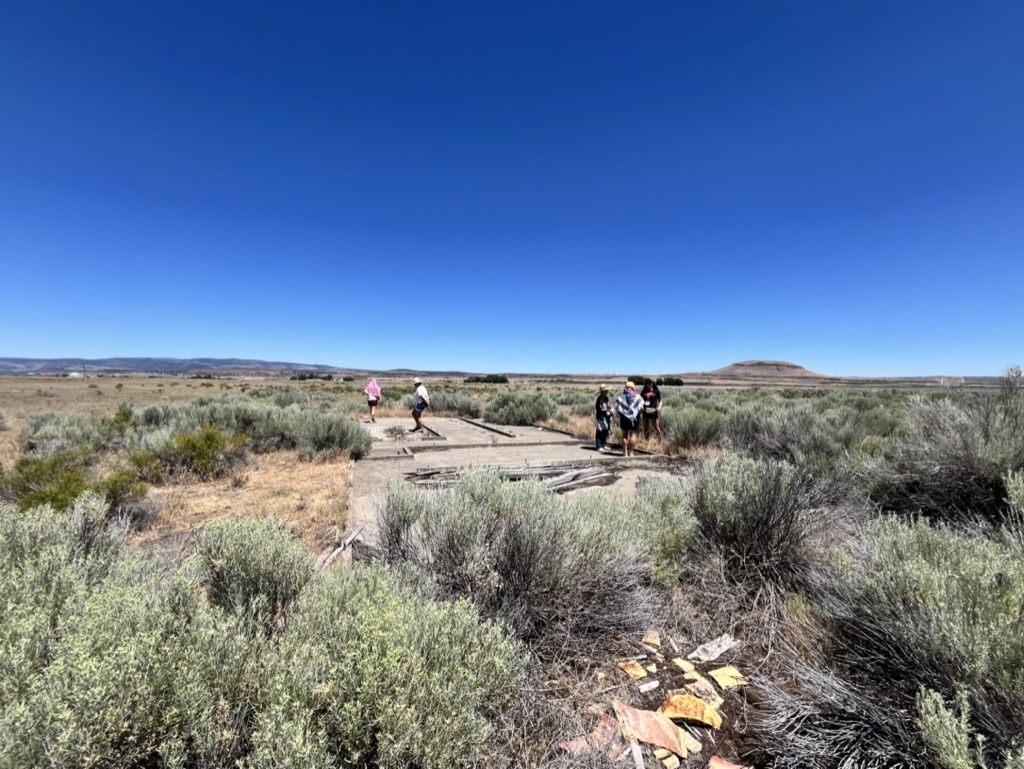
Before attending the Tule Lake Pilgrimage, I never fully understood the extent to which the US government’s unjust and arbitrary assessment of “loyalty” has facilitated fractures within our own communities that we are still unlearning and healing. Everything I learned and observed during this pilgrimage affirmed my personal commitment to my healing work and to playing my part to call out and intervene in the injustices perpetrated by the United States, past and present.
As much as I am grateful for everything I learned during the pilgrimage, I have returned home with even more questions than the ones I started with on that first bus ride up to Klamath Falls. Most notably, it wasn’t until after my trip that I realized my own family had been incarcerated at Tule Lake. Throughout the pilgrimage, we were often asked if we had a family connection to Tule Lake. I insisted that no, I didn’t have any family at Tule Lake, but I was still interested to learn since my family had been incarcerated at Gila River and Jerome — because this is all that I had managed to glean from conversations with my family and some initial research. But later, while writing this reflection, I was double checking my research on my family’s incarceration history when I found that I had several family members who were transferred to Tule Lake. While I don’t think there is much I would have done differently if I had known while I was there, it still made me very emotional to realize I had unknowingly retraced my family’s journey from our home town of Fresno to Tule Lake.
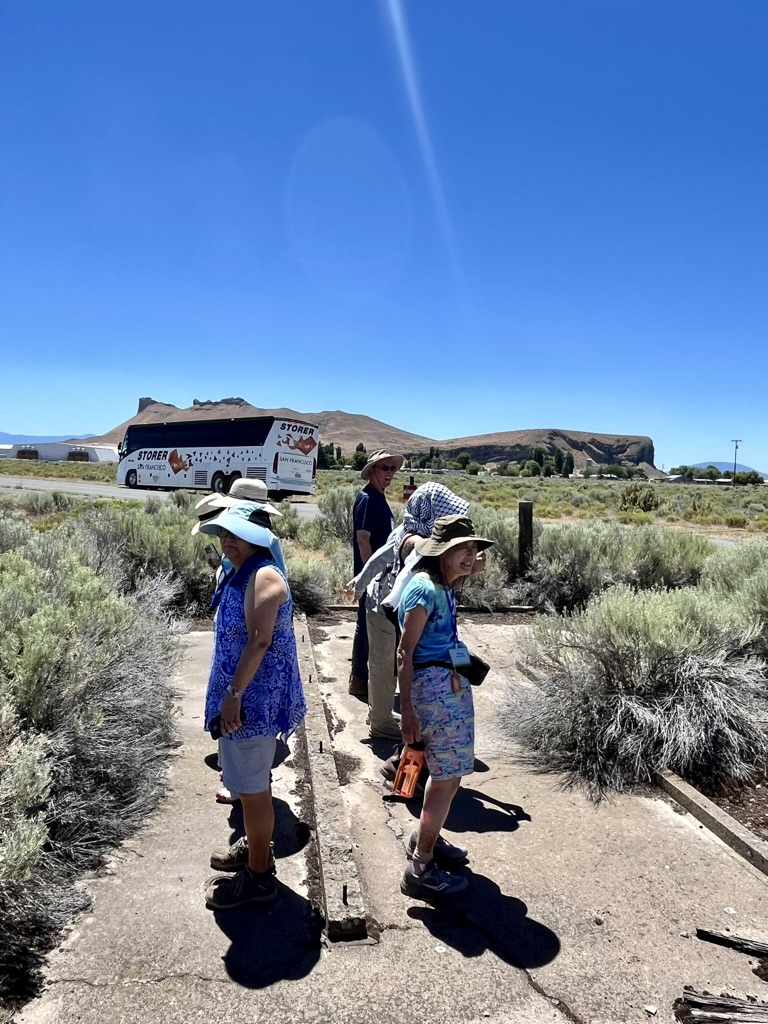

Just when I thought I was starting to understand my own family’s experience, I have been humbled to learn there is so much more for me to learn and unpack. Since this discovery, I’ve asked my coworkers to direct me to relevant archives and resources so I can continue learning more about my great-grandparents and grandparents, and how their journeys have shaped my own life.
As I’m waiting to hear back from them, I keep reminding myself that regardless of what I learn about my own ancestors’ past, I can choose to live a life that allows me to be a good ancestor to others. Just as I set my intentions and shared my questions on the bus ride up to Klamath Falls, I wish to close with the next set of questions I’m bringing with me as I dig deeper into my family history and my own role in solidarity work:
- How can we support each other in our own healing and (un)learning journeys to grow into the good ancestors we hope to be to future generations?
- As we continue learning about the incarceration history, how are we contextualizing Japanese American experiences within the broader pattern of violence and dispossession perpetuated by the United States and upheld by white supremacy?
- How can we channel our grief, rage, and hope into a culture of transnational solidarity as we organize alongside communities of the global majority?
Lastly, I wish to extend my gratitude to the Tule Lake Committee and all the volunteers who poured so much care, energy and time into planning this pilgrimage over the past four years. Thank you!
—
By Kassandra Hishida, Densho Development Manager
For those who wish to continue learning about Tule Lake after the pilgrimage or for those who were unable to attend, visit densho.org/tulelake to access Densho’s curated set of oral histories, encyclopedia articles, and recorded presentations and collections that provide further insight as we continue reframing the narrative around Tule Lake and the experiences of those incarcerated there.
Learn more about the Tule Lake Committee who made this pilgrimage possible and are working to preserve the physical site as well as maintain our personal connection to it at www.tulelake.org. Express your support and gratitude for the Committee’s work today by donating at www.tulelake.org/donations.
[Header: Pilgrimage attendees explore barracks on the site of the Tule Lake concentration camp.]
Funding made possible by The Henri and Tomoye Takahashi Charitable Foundation.
